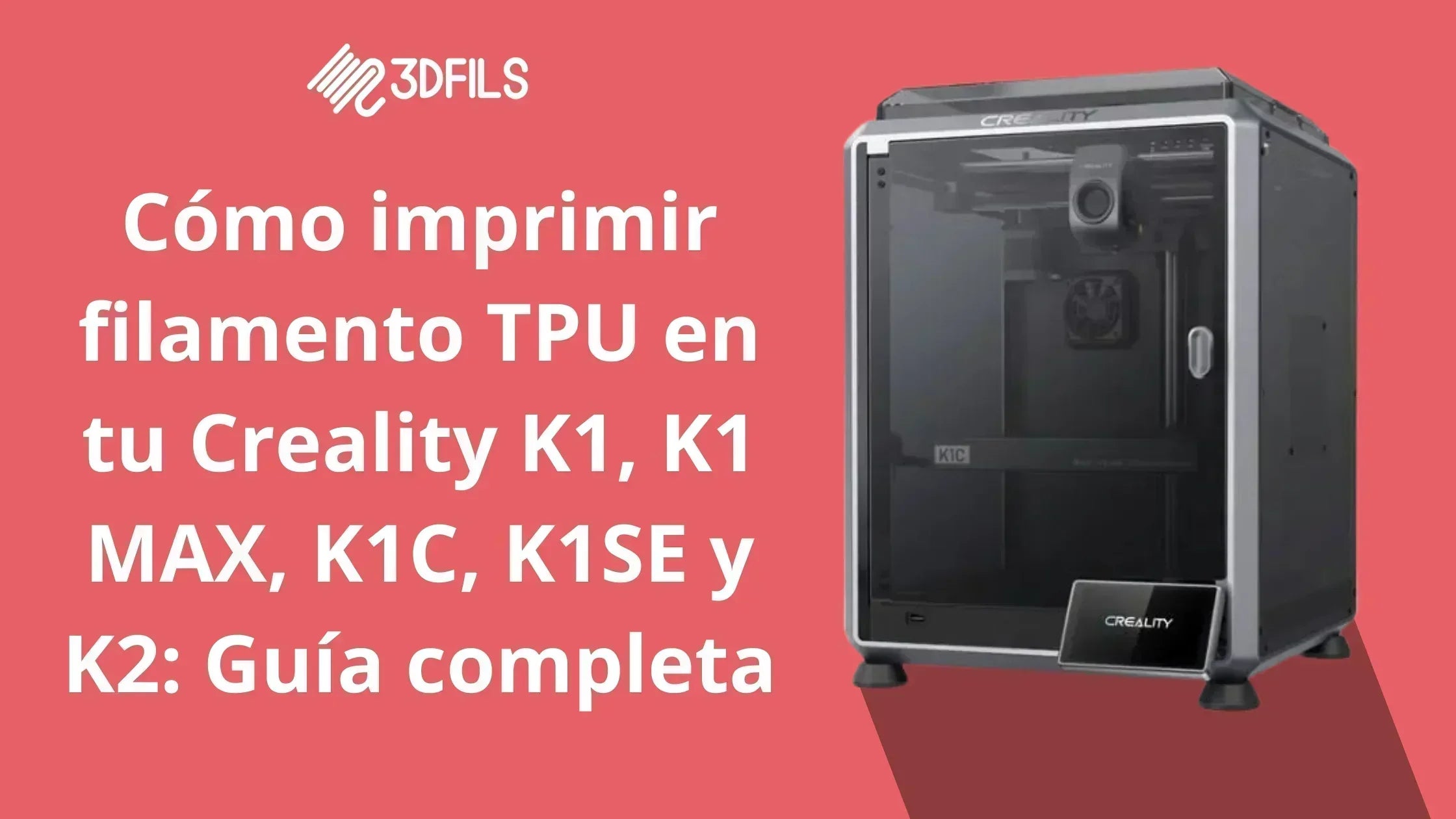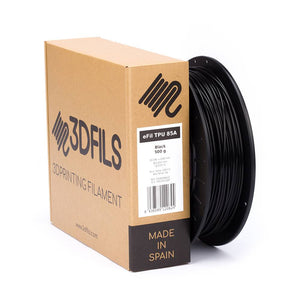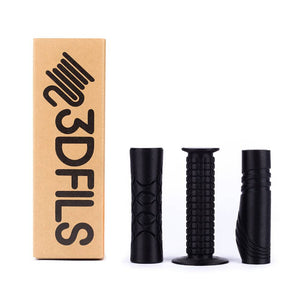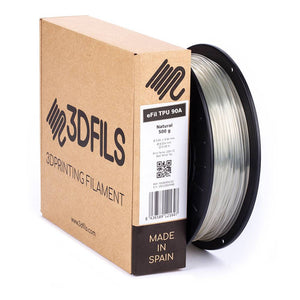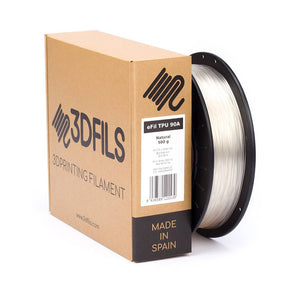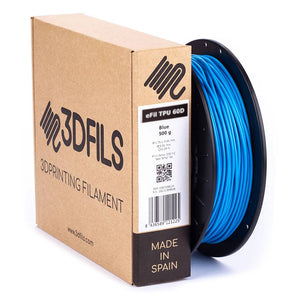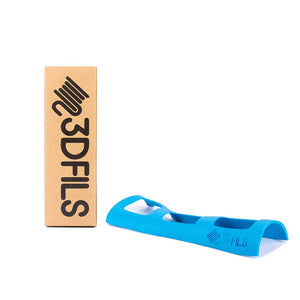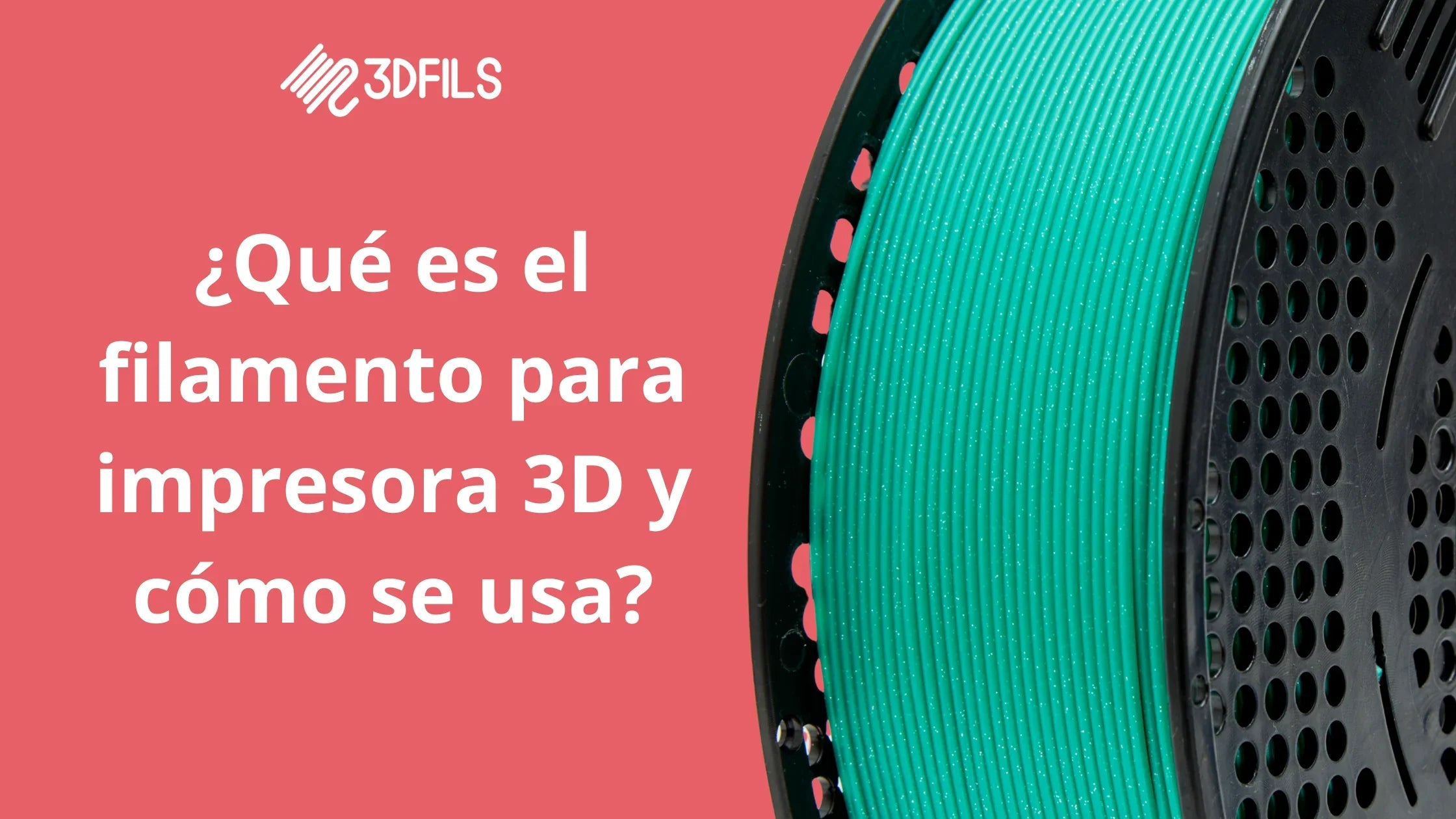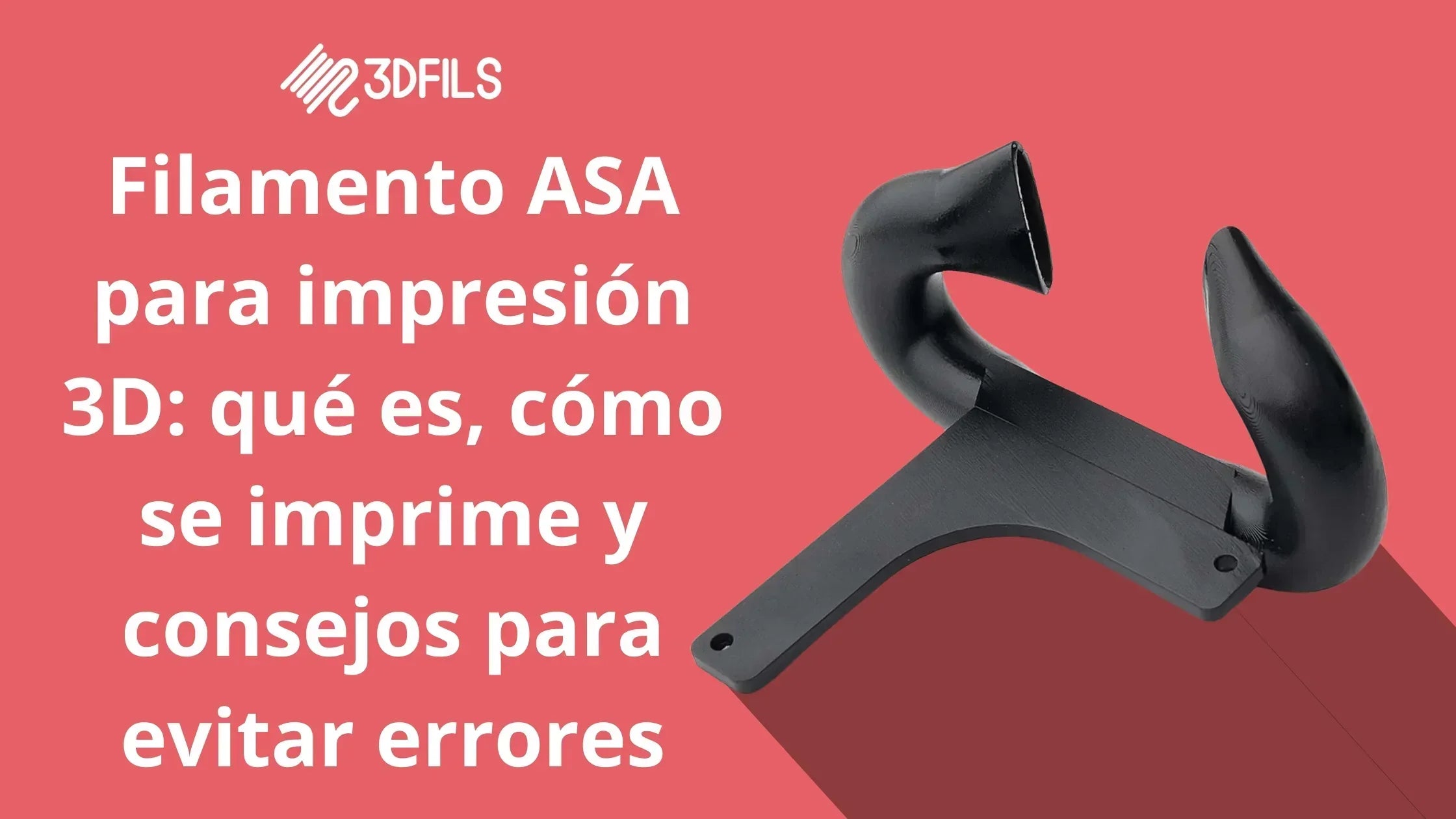Do you want to print flexible TPU filament on your Creality K printer? Although flexible filament can be tricky at first, we’ve prepared this guide covering everything you need to work with TPU filament on these printers.
1. What is TPU filament and why use it?
TPU filament (Thermoplastic Polyurethane) is one of the most popular 3D printing materials due to its flexibility and durability. It’s ideal for printing elastic and resilient objects such as phone cases, adaptable devices, or industrial parts. Its unique properties let you print pieces for a wide range of applications, from prototypes to functional parts—an essential material for all 3D print users.

1.1 Key properties of TPU
TPU filament (thermoplastic polyurethane) is one of the most versatile 3D printing materials thanks to these unique characteristics:
- High elasticity: TPU can stretch 300–500% of its length and return to its original shape without deforming—perfect for flexible parts and springs.
- Impact and abrasion resistance: Its structure provides great durability, absorbing knocks and friction without cracking or breaking.
- Excellent layer adhesion: Minimizes delamination risk, allowing you to print complex geometries with strong mechanical integrity.
- Low shrinkage: Almost no warping, so the first layer sticks easily and parts maintain their dimensions.
- Chemical resistance: Withstands oils, greases, and mild chemicals, expanding use to functional components and outdoor parts.
- Shore A range: Available in typical hardness levels between 85A and 95A, so you can adjust flexibility to your project.
These key properties make TPU perfect for cases, seals, dampers, flexible prototypes, and any part requiring a combination of elasticity and strength.
1.2 Uses and advantages over other filaments
TPU has many applications, including automotive parts, sports equipment components, medical devices, footwear, and orthopedics…
Its main advantage is flexibility, allowing you to print parts that deform and recover their shape while absorbing impacts. It also offers excellent mechanical properties and strong chemical resistance.
In summary, TPU is the optimal choice when you need elasticity, durability, and wear resistance in functional parts, overcoming the rigidity and brittleness limitations of other materials.
2. Preparing your Creality K for TPU
Although 3D printing TPU filament has always presented challenges, the Creality K1, K1 MAX, K1C, K1SE, and K2 printers are ready to handle this flexible filament without issues. In this article, we’ll give you the keys to print TPU like a pro.
2.1 Bed adhesion
TPU adheres very well to the print bed, so you don’t need a heated bed, sprays, or glues. In fact, using them can cause parts to stick too much and damage the bed surface when removing.
2.2 Installing the proper nozzle
To print TPU, you can use the standard brass nozzle that comes with your Creality K printer. Keep in mind that the smaller the nozzle diameter, the harder it is for the material to flow. With very low hardness (like 85A), this will significantly limit your print speed and increase clogging risk.
We recommend printing with 0.6 mm nozzles, balancing printability, speed, and quality. You can also print perfectly well with the 0.4 mm nozzle on the Creality K1.
2.3 Feeding TPU into the extruder
Although the default filament path on Creality printers works fine, we recommend a small modification to improve the feeding experience.
The K-series printers feed filament from the rear through a plastic tube. Flexible filament sliding through this tube can cause friction and feeding issues, leading to extrusion problems and failed prints.
We recommend printing this simple modification. This will ease filament entry into the printer.

2.4 Cooling
Cooling plays a crucial role in good TPU print results. We recommend turning off the fan for the first layers, then increasing it to 30% for the rest of the print.
3. Recommended settings in Creality Print slicer for TPU
3.1 Nozzle temperature
The nozzle temperature for printing TPU on your Creality printer should be between 210 °C and 240 °C. In our internal tests, the best temperature for printing eFil TPU on Creality machines is 230 °C.
3.2 Bed temperature
TPU adheres very well to the bed, so you don’t need a heated bed.
3.3 Print speed and retraction
To print TPU, you must print slowly to avoid extruder jams caused by the material’s flexibility. We recommend a print speed between 20 and 30 mm/s.
Once you get consistent results, you can slightly increase the speed.

For retraction, keep it minimal to avoid jams. High retraction can cause the flexible filament to buckle and jam. Set retraction to 1–2 mm at a speed of 20 mm/s.
3.4 Layer height and perimeter width
We recommend not using layer heights below 0.2 mm, as too thin layers can prevent proper flow through the nozzle when it’s too close to the previous layer.
Set perimeter width to 100% of your nozzle diameter.
| Setting | Recommended Value | Notes |
|---|---|---|
| Nozzle temperature | 210 °C – 240 °C | Optimal: 230 °C for eFil TPU |
| Bed temperature | Not required | Excellent adhesion without heated bed |
| Print speed | 20 – 30 mm/s | Print slowly to avoid jams; can increase after tests |
| Retraction | 1 – 2 mm at 20 mm/s | Minimal retraction to prevent jams |
| Layer height | ≥ 0.2 mm | Too thin (< 0.2 mm) can clog flow |
| Perimeter width | 100% of nozzle diameter | Ensures well-defined perimeters |
4. General tips for printing with TPU filament
4.1 Keep the filament dry
TPU filament is highly hygroscopic, meaning it absorbs moisture from the environment. This moisture can cause print defects and weaker parts.
It’s recommended to dry your TPU filament before each print. You can use an oven, a dehumidifier, or a specialized 3D printing filament dryer.
4.2 Avoid stringing
To reduce stringing in TPU prints, fine-tune temperature and retraction settings. Although this guide provides general TPU parameters for Creality K printers, different environments and filament batches may require different tweaks.
If you’re getting a lot of stringing, gradually increase retraction and gradually decrease print temperature until you achieve the desired finish.
Also, remember that moist filament is more prone to stringing.
5. Troubleshooting common issues
In this section we’ll solve the most common issues you may encounter when printing TPU on Creality K1, K1 MAX, K1C, K1SE, and K2 printers. While these tips are tailored to the mentioned models, they apply to any 3D printer.
5.1 Extruder jams
If you’re suffering from extruder jams like the one shown in the image, focus on two parameters:
First, retraction. Too much retraction pulls filament out of the hotend, and when it tries to feed back in, the soft filament can buckle and jam the extruder.

Print speed is another factor: TPU’s flexibility reduces pushing force, so if you print too fast, the material can’t enter the hotend properly.
5.2 Over- and under-extrusion issues
You may experience over-extrusion (too much material) or under-extrusion (too little filament) when printing TPU. To correct these:
- Fine-tune print temperature:
- Temperature tower: Print a tower with ±5 °C increments (e.g., 215 °C to 240 °C). Identify where lines are most uniform and gap-free.
- Over-extrusion: If the surface bulges or strings are thick, lower the temperature in 5 °C steps until resolved.
- Under-extrusion: If layers are missing or gaps appear, raise the temperature in 5 °C steps until flow is smooth.
- Flow rate calibration:
- Test flow rates between 95% and 105% in CrealityPrint.
- 105%–110% to fill gaps; 90%–95% if material piles up.
- Print a 20×20×20 mm cube and adjust flow until wall thickness matches your nozzle size.
- Print speed and retraction:
- Keep speed at 20–30 mm/s; if you increase flow, reduce speed (e.g., to 15 mm/s) to evaluate changes.
- Use 1–2 mm retraction at 20 mm/s to avoid air in the hotend.
- Check extruder mechanics:
- Ensure the drive gear isn’t slipping: clean TPU residues and adjust tension.
- Verify the PTFE tube is clear and filament flows freely.
- Validation tests:
- Print an over/under-extrusion test (single-wall) and check layer uniformity and corners.
- Save optimal settings (temperature, flow, speed) as a profile in CrealityPrint.
6. Conclusion and print profiles
Printing flexible TPU filament on a Creality K1, K1 MAX, K1C, K1SE, and K2 printer is entirely possible with the right material and settings. Make sure to adjust all the parameters we covered, and you’ll have no issues. We’ve also prepared a ready-to-import CrealityPrint profile for you, making your life much easier. Download it here
Frequently Asked Questions (FAQ)
What parameters should I use to print TPU on my Creality printer?
- Print temperature: 210 °C – 230 °C
- Heated bed: Off
- Retraction: 1 mm at 20 mm/s
- Print speed: 20 mm/s
Can I print TPU without a heated bed?
Yes, TPU adheres well to the print surface without a heated bed.
Which nozzle should I use for TPU on the Creality K1?
You can use any material nozzle, but ensure it’s at least 0.4 mm in diameter.
How do I prevent stringing when printing TPU?
To prevent stringing with TPU, dry the filament and reduce print temperature.
🚀 Ready to start printing flexible filaments?
Buy TPU filament directly from the manufacturer, with fast shipping from Spain and personalized support.
View TPU filaments

